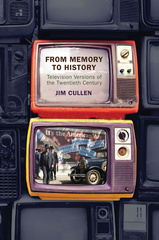Look Closer
Suburban Narratives and American Values in Film and Television
In recent years, the media landscape in the United States has followed a pattern similar to that of the physical landscape by becoming increasingly suburbanized. Although it is a far cry from reality, the fantasy of a perfect suburban life still exists in the collective imagination of millions of Americans. This dream of suburban perfection is built around a variety of such ideologically conservative values and ideals as the importance of tradition, the centrality of the nuclear family, the desire for a community of like-minded neighbors, the need for clearly defined gender roles, and the belief that with hard work and determination, anyone can succeed.
Building on the relationships between suburban life and American identity, Look Closer examines and interprets recent narratives that challenge the suburban ideal to reveal how directors and producers are mobilizing the spaces of suburbia to tell new kinds of stories about America. David R. Coon argues that the myth of suburban perfection, popularized by postwar sitcoms and advertisements, continues to symbolize a range of intensely debated issues related to tradition, family, gender, race, and citizenship. Through close examinations of such films as American Beauty, The Truman Show, and Mr. & Mrs. Smith as well as such television series as Desperate Housewives, Weeds, and Big Love, the book demonstrates how suburbia is used to critique the ideologies that underpin the suburban American Dream.
With ingenuity, nuance, and an eye for visual detail, Coon's timely and significant book explores the tendency of recent media narratives to question the sanitized, simplistic myth of suburbia.
Coon's savvy book is dynamic, contentious, and revealing. His persuasive analyses show how cinema, television, and advertising have both reinforced and challenged prevailing ideas of the 'burb and the happy, bizarre, and painful lifestyles that unfold there.
Coon primarily examines contemporary Hollywood representations of middle-class life in the US cul-de-sacs. This is a well-written book that will benefit a variety of readers. Highly recommended.
A needed contribution to the young fields of suburban studies and popular media.
With ingenuity, nuance, and an eye for visual detail, Coon's timely and significant book explores the tendency of recent media narratives to question the sanitized, simplistic myth of suburbia.
Coon's savvy book is dynamic, contentious, and revealing. His persuasive analyses show how cinema, television, and advertising have both reinforced and challenged prevailing ideas of the 'burb and the happy, bizarre, and painful lifestyles that unfold there.
Coon primarily examines contemporary Hollywood representations of middle-class life in the US cul-de-sacs. This is a well-written book that will benefit a variety of readers. Highly recommended.
A needed contribution to the young fields of suburban studies and popular media.
DAVID R. COON is an assistant professor of media studies at the University of Washington Tacoma.
Introduction: Welcome to the Neighborhood
1. Traditional Values: Nostalgia and Self-Reflexivity in Visual Representations of Suburbia
2. Back Yard Fences: The Public, the Private, and the Family in Suburban Dramas
3. Suburban Citizenship: Defining Community through the Exclusion of Racial and Sexual Minorities
4. Desperate Husbands: The Crisis of Hegemonic Masculinity in Post-9/11 Suburbia
5. Protecting the Suburban Lifestyle: Consumption, Crime, and the American Dream
Conclusion: There Goes the Neighborhood
Notes
Index










